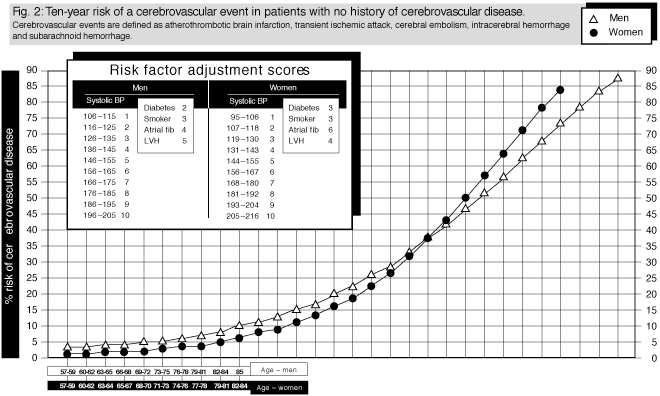Using the nomograms
To estimate a patient's risk of a cardiovascular or cerebrovascular event, select the appropriate nomogram and carry out the following steps.- Find the patient's age on the appropriate scale (men or women).
- Trace a line upward to the corresponding square on the 5- or 10-year risk line (Fig. 1) or the 10-year risk line for men or women (Fig. 2). The corresponding value on the y axis is the patient's absolute risk, taking only age and sex into account.
- To take other risk factors into consideration, identify the risk factor adjustment score (in the large box) for each risk factor present in the patient. If the score is a positive number, move to the right up the risk line the appropriate number of squares. (Each square equals 1 point.) If the score is a negative number, move to the left the appropriate number of squares. Repeat this in series for each risk factor. Once all risk factors have been considered, find the corresponding value to determine the patient's estimated overall risk. (See text for sample case.)

Figure based on material in D'Agostino RB, Wolf PA, Belanger AJ, Kannel WB. Stroke risk profile: adjustment for antihypertensive medication: the Framingham Study. Stroke 1994;25:40-3.